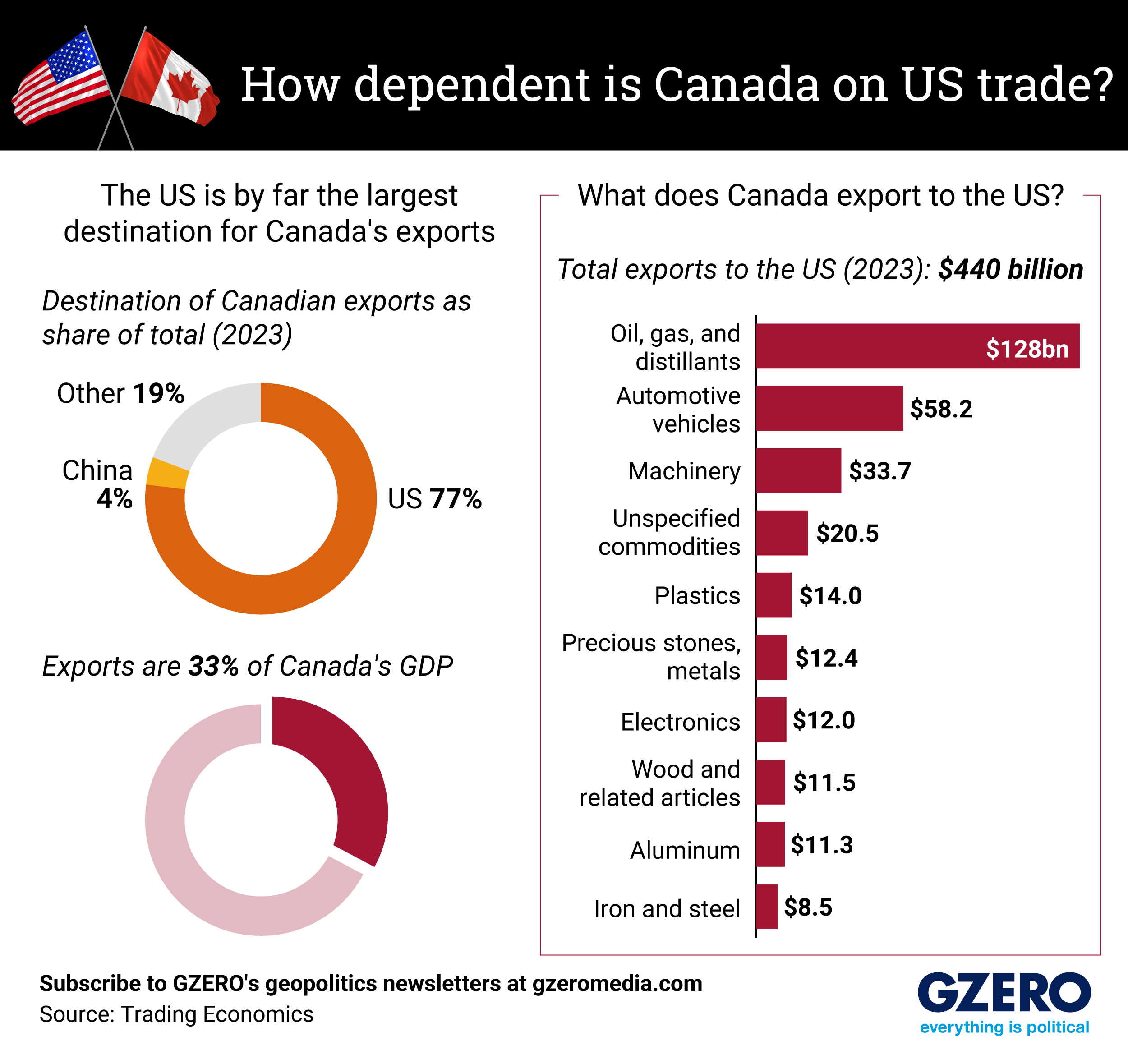November 14, 2024
On the campaign trail, Donald Trump pledged to raise tariffs against China to 60% and to impose a blanket tariff of at least 10% on imports from every other country, friend or foe.
It’s not yet clear how he will follow through with that threat – mainstream economists have warned of its inflationary effects – but the president-elect and top advisers, including his former trade chiefRobert Lighthizer, are working hard on it as Trump prepares to take office in January.
What effect would a blanket tariff have on Canada, whose economy is tightly integrated with the US? Brace yourself. A recent report by the Canadian Chamber of Commerce estimated that a permanent 10% US tariff on Canada would cause US imports to fall by 10%, and knock as much as 5% off of Canada’s GDP.
Here’s a look at just how dependent Canada’s economy is on the US, and the key export categories.
From Your Site Articles
More For You
Mastercard Economic Institute's Outlook 2026 explores the forces redefining global business. Tariffs, technology, and transformation define an adaptive economy for the year ahead. Expect moderate growth amid easing inflation, evolving fiscal policies, and rapid AI adoption, driving productivity. Digital transformation for SMEs and shifts in trade and consumer behavior will shape strategies worldwide. Stay ahead with insights to help navigate complexity and seize emerging opportunities. Learn more here.
Most Popular
Think you know what's going on around the world? Here's your chance to prove it.
Miami Mayor-elect Eileen Higgins points as she thanks her staff and supporters on the night of the general election, on Tuesday, Nov. 4, 2025.
Carl Juste/Miami Herald/TNS/ABACAPRESS.COM
A Democrat won Miami’s mayoral race for the first time in nearly 30 years. The Republican defeat will ring some alarms for the party – and their support among Latino voters.
Women work in the plastic container assembly area inside the El Oso shoe polish factory, located in Mexico City, Mexico, in its new facilities, after officers from the Secretariat of Citizen Security and staff from the Benito Juarez mayor's office arbitrarily and violently remove their supplies, raw materials, machinery, and work tools on January 17 of this year following a coordinated operation stemming from a private dispute. On August 27, 2025.
Photo by Gerardo Vieyra/NurPhoto
50: Mexico’s President Claudia Sheinbaum is taking a page out of US President Donald Trump’s book, implementing up to a 50% tariff on more than 1,400 products in a bid to boost domestic production.
© 2025 GZERO Media. All Rights Reserved | A Eurasia Group media company.
